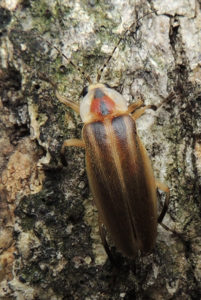Home »

Fireflies: beacons in the night
Op-Ed Commentary
On a recent trip to Panama, we took in a night hike to dive into the remarkable nocturnal tropical world. Nighttime in the tropics is a raucous, humid extravaganza for the ears and nose. From frogs to over-sized insects and night-blooming flowers, a whole different world emerges for the nightshift.
One of the treats we saw on this particular night was a firefly display in the multi-layered rainforest where different species were displaying at varying heights under the canopy. Winking dots of light flickering amongst the towering hardwoods and dripping bromeliads.
What may surprise many back here in the Kootenays is that we too have fireflies. In fact, the Rocky Mountain Trench in the East Kootenay is considered to be the hotspot for fireflies in all of British Columbia.
In North America, fireflies are most common in hardwood forests east of the Mississippi and Great Lakes. Even the species that occurs here brings its name from back east, Photuris pensylvanica. Surprisingly little is known about the ecology of fireflies considering how they stand out whenever they’re around.
Fireflies are not, in fact, flies. Rather they are beetles and there are over 2,000 species known world-wide. In North America alone there are over 100 different species. Furthermore, in many species the adult female doesn’t fly.
They spend the majority of their lives as larvae, living on or underground as ferocious predators of other invertebrates. For up to two years, they develop slowly, dining on earthworms, snails and other soil denizens in a most ghastly fashion. Grabbing hold of their prey, they inject a toxin that kills or at least subdues the victim. That’s followed by digestive enzymes that literally dissolve the prey so that it can be “drunk” by the firefly larva. Yum!

All firefly larva glow, something that initially seems counterintuitive to survival as a largely helpless grub on or near the surface. The secret is their toxicity. Like monarch butterflies and several other insects, fireflies taste horrific at best; some are downright toxic to potential predators. Just as the bright colours of a monarch or poison dart frog scream “Caution!” so too does a firefly larva’s glowing hind end notify would-be predators they’d best find dinner elsewhere.
Once they mature into an adult beetle, however, the whole point of glowing takes on a new meaning. After years of larval development, many adults live for just a few short weeks, forego any nourishment and live solely for the chance to mate and pass on their genes to another generation. Males rely on their flash to attract a female partner. Females may respond with their own flash and together they communicate in light back-and-forth until they’re together. Nature takes it from there. Biologist Sara Lewis calls it a “silent love song.”
Just like birds have different songs, each firefly species has a different flash pattern that allow males and females to find each other so that several species can be found in the same area. Sort of biology by Morse code.
Ten years ago, local biologist Bob Jamieson took an interest in fireflies and conducted a survey of where they might occur in the East Kootenay. He found them in several wetland areas between Fort Steele and Brisco. Some of the common habitat features included wetlands with sedge meadows and spring brooks that usually flow year-round.
Unfortunately, fireflies are not doing well both locally and around the world. Conversion of their wetland or forested habitat to agriculture or urban areas has left many without a home. Pesticide use has also taken a toll, as it has on many insects.
Among the greatest threats, though, is light pollution. Even in urban areas, perhaps fireflies could perhaps find suitable habitat patches to work their luminous magic. However, the ambient light typical of most urban and industrial areas is too much for an insect to overcome and without their means of communication, males and females can’t find each other. Ambient light at night is a main threat to firefly survival.
June is a great month for firefly viewing. So stay up late, get out of town and turn off your flashlight. You might be surprised at what you see!
– Ian Adams is a wildlife ecologist living near Cranbrook who enjoys staying up well past his bed time to look for nocturnal creatures.








